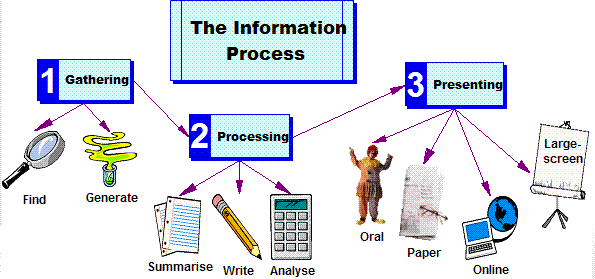| The Information Process |
|
There are three stages in the Information Process. It is very important when you design a lesson or series of lessons that you try to include all 3 stages. The first stage is to get the learners to gather information. They can do this by referring to books, the internet, newspapers etc. Or they can generate their own information through conducting experiments, or doing surveys. An important part of this stage is to get learners to think carefully about what information is required before they rush off to try to find it. Often we are happy for our learners merely to gather information. But unless they actually do something with that information, they will not learn much. They need to process the information by working with it, analysing it, summarising it or making it their own in some way. Finally they need to present the information to someone. It is exciting for the learners to have an audience which is not the teacher. Maybe another class? Maybe another learner on the other side of the world being contacted through email? A simple
example: |
